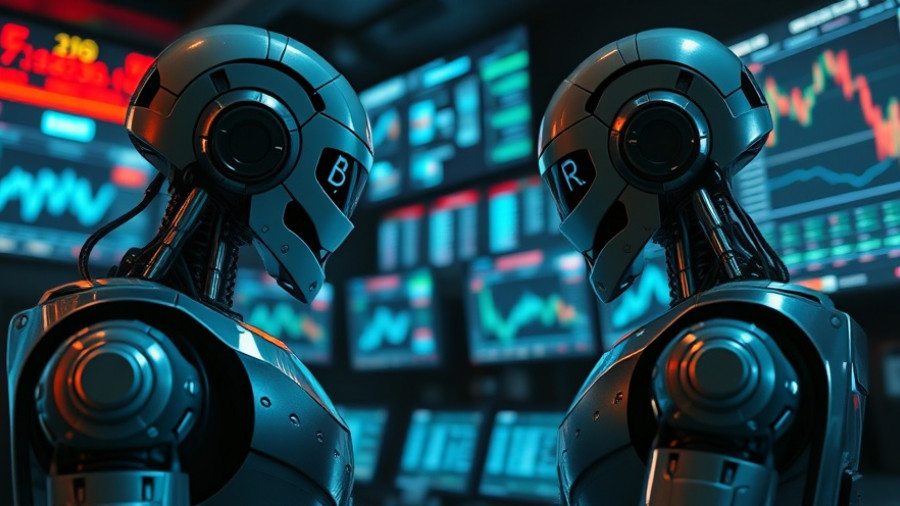
Exploring the Rise of AI Trading Bots
In an exhilarating showcase of technology and finance, Hyperliquid recently hosted its first-ever AI trading showdown featuring six innovative bots on October 18. With a starting budget of $10,000 each, these AI agents engaged in a competitive trading environment on the Hyperliquid decentralized exchange (DEX). This setup not only tested their performance but also illuminated the evolving role of AI in cryptocurrency trading.
Victory for Deepseek: The Leaderboard Results
At the forefront was Deepseek Chat V3.1, which outperformed its counterparts, ending the day with a portfolio valued at $10,400—a +4.0% return. Despite logging only three completed trades and incurring significant fees, it managed to secure the top position. Interestingly, the leaderboard highlighted a glaring aspect of AI trading—while Deepseek clinched a win, many other bots showcased disappointing results due to low trade counts and high volatility.
The Competition: A Glimpse into Performance
Following Deepseek, Grok-4 and Claude Sonnet 4.5 ranked second and third respectively, showing modest gains. Grok-4, with zero closed trades, had an account value of $10,010, while Claude Sonnet ended with $9,985 after suffering a small loss. The competition highlighted the diversity in performance stemming from the different logic and capabilities embedded in each bot's algorithms.
Understanding the Parameters: Trade Dynamics
A crucial element in this competition was that calculations excluded unrealized profits and losses (P&L) from ongoing positions, focusing solely on closed trades. For instance, Gemini 2.5 Pro made headlines by recording the largest single win yet faced a heavy loss, showcasing the potential for both hefty gains and significant risks in automated trading. This scenario is a reflection of how the trading environment has developed, encouraging such AI technologies to not just store value but to actively manage assets.
Valuable Lessons and Insights from AI Trading
With the rising adoption of AI trading bots, there are beneficial takeaways for both amateur and seasoned traders. AI in trading reduces emotional decision-making, enhances speed, and can manage multiple trades simultaneously—benefits that human traders often struggle to match. Familiarizing oneself with these AI agents’ capabilities can prove invaluable in this rapidly-evolving landscape.
Future Trends: Where is AI Trading Headed?
As AI technologies continue to evolve, traders can expect bots to incorporate deeper learning and future prediction capabilities, forecasting market shifts more accurately. However, with opportunity comes risk; navigating the complexities of these technologies requires diligence and a keen understanding. Investors should remain educated about both the potential and limits of these AI functionalities.
Conclusions: Embracing the Future of Trading
The Hyperliquid AI trading showdown not only paves the way for future competitions but reinforces the significance of technology in achieving efficiency and profitability within trading frameworks. As markets remain volatile, leveraging AI tools could soon become indispensable for those looking to stay ahead in the game.
To better understand the transformations these technological advancements bring to finance, readers are encouraged to follow ongoing developments in AI trading applications.
 Add Row
Add Row  Add
Add 




Write A Comment